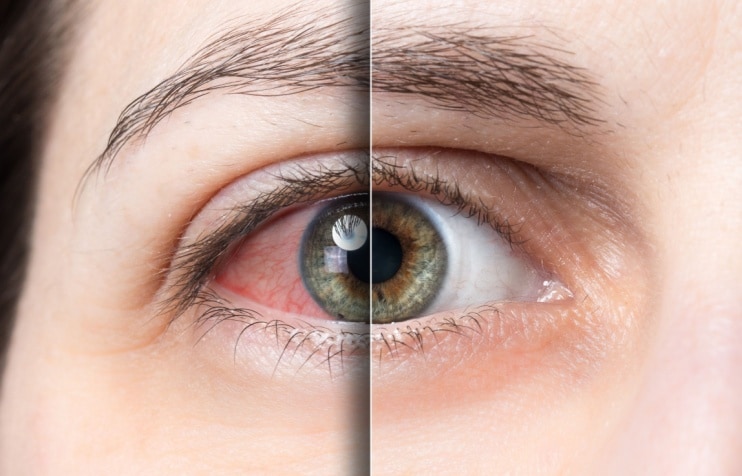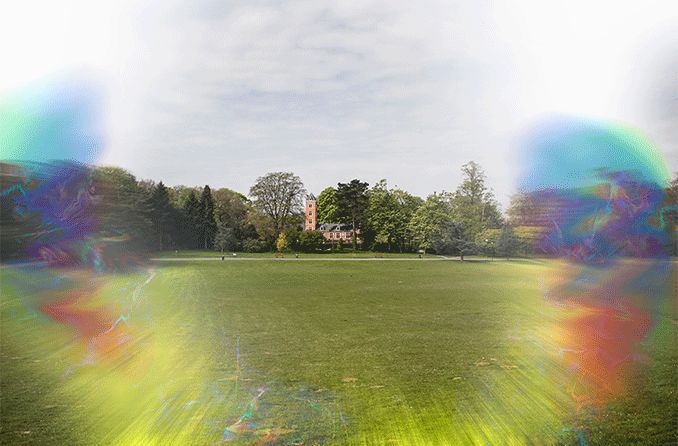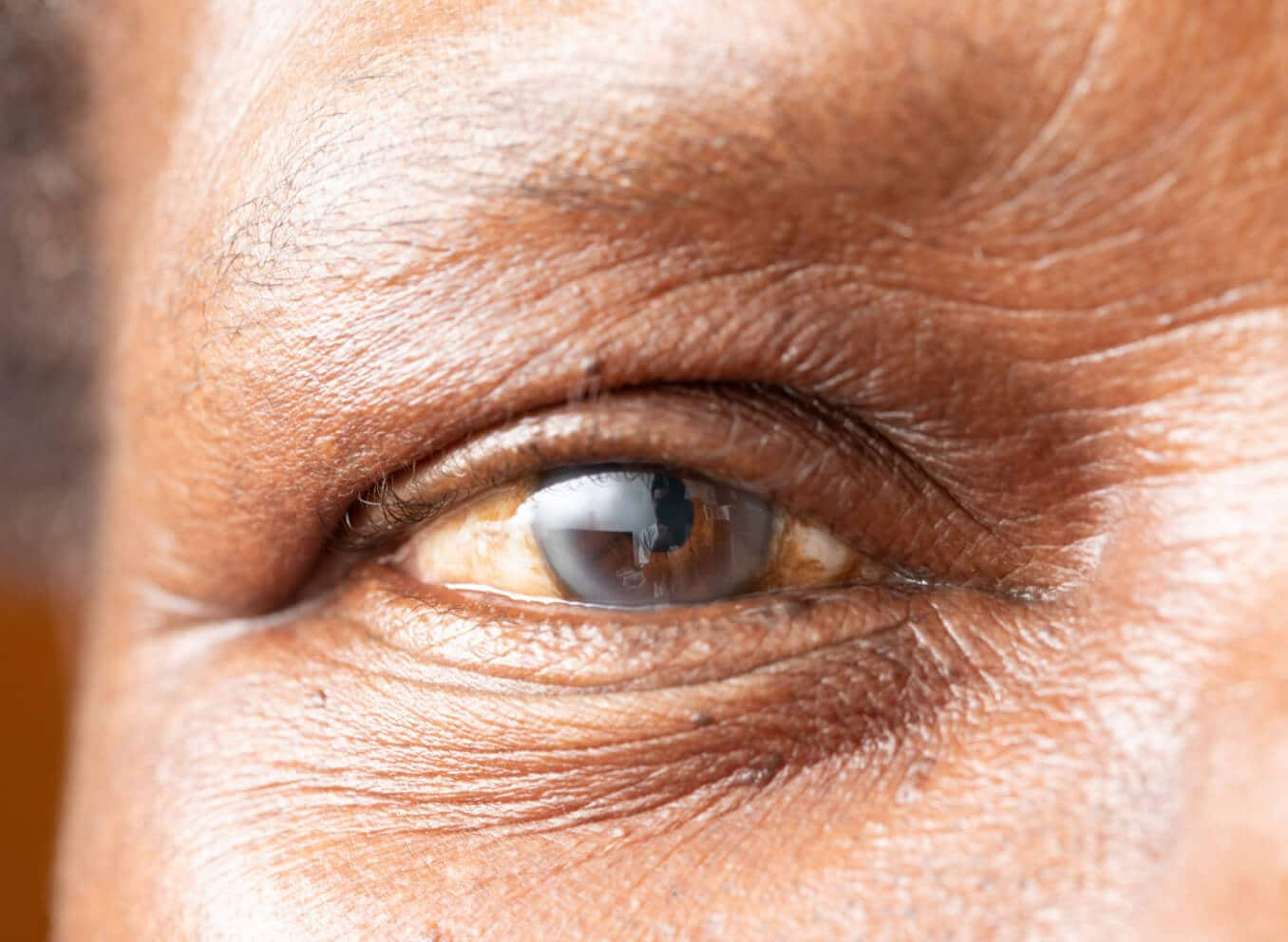Introduction to antipsychotics, mood stabilizers and vision
Mood stabilizers and antipsychotics are drugs typically used to treat bipolar disorder and psychosis (a condition that affects a person’s sense of reality). Both can cause side effects in the eye, ranging from dry eyes to eye damage over time.
Mood stabilizers are a type of psychoactive drug, which is any drug that can cause a change in mood or behavior. They can reduce mood swings and help regulate these sudden changes in emotions. This makes them effective for managing the manic and depressive states in bipolar disorder. Common mood stabilizers include:
- Lithium
- Carbamazepine
- Valproic acid (also known as valproate)
- Lamotrigine
Most mood stabilizers are available as capsules or tablets (such as lithium carbonate, which is a slow-release medicine).
Antipsychotics are a class of medications used to treat psychosis. Some antipsychotics can be used to stabilize mood. A person with psychosis may sense things that aren’t really there or experience delusions (false beliefs about where they are or who someone is). Antipsychotics can treat schizophrenia and delirium, among other conditions. There are two types:
- First-generation – Mainly work by blocking dopamine D2 receptors. Some also affect acetylcholine receptors. These medications are also known as typical antipsychotics.
- Second-generation – Mainly work by blocking both dopamine D2 and serotonin 5-HT2A receptors. These medications are also known as atypical antipsychotics.
Most antipsychotics are available as oral medications.
Mood stabilizers and antipsychotics are necessary for managing certain conditions. However, it’s important to understand how they might affect your eye health and vision.
SEE RELATED: Schizophrenia and your eyes
Common vision side effects of antipsychotics
Both generations of antipsychotics can cause side effects in the eyes. This is likely because they affect the activity of neurotransmitters (chemical messengers in the brain). Neurotransmitters affected by antipsychotics can include:
- Dopamine – Involved in most functions in the central nervous system, including eye function. Dopamine receptors are found throughout parts of the eye.
- Serotonin – Helps regulate mood, behavior and other neurotransmitters. It also helps modulate how visual information is processed in the brain.
- Acetylcholine – Involved in muscle control, the production of tears, accommodation and inflammation in the body.
- Histamine – Helps regulate physiological functions in the central nervous system. It also plays a role in inflammation.
Antipsychotic side effects vary based on drug, dosage and how long the drug has been taken. Some of the more common eye and vision side effects of these medications are discussed below.
Glaucoma and antipsychotics
Glaucoma is a group of eye diseases characterized by damage to the optic nerve (the structure that carries visual information from the eye to the brain). The damage usually results from high eye pressure. It is caused by a buildup of fluid (aqueous humor) that the eye can’t drain properly, damaging the optic nerve.
Antipsychotic medications can impact eye pressure, medically referred to as intraocular pressure (IOP). But how these medicines affect IOP varies.
Some antipsychotics are anticholinergic, which means they interfere with the neurotransmitter acetylcholine. Anticholinergic drugs can cause pupil dilation. This can increase the risk of the drainage angle closing in some people, leading to acute angle-closure glaucoma. However, first-generation antipsychotics don’t usually significantly increase the risk of open-angle glaucoma.
There is some limited evidence that second-generation antipsychotics may lower IOP. Other antipsychotics have been found to have no impact on IOP or have been shown to raise it.
Symptoms of a rise in IOP, especially one that occurs suddenly, can include:
- Nausea or vomiting
- Headache
- Blind spots (especially in your peripheral vision)
- Eye pain
- Halos surrounding lights
However, people with chronic open-angle glaucoma don’t often have any symptoms early in the disease. It’s possible that damage or worsening vision won’t become obvious until an advanced stage.
Before starting an antipsychotic medication, patients considered high risk for glaucoma or elevated IOP should be screened by an eye doctor. This includes those with:
- Pre-existing mydriasis (abnormally dilated pupils)
- Pre-existing eye disease
Damage from glaucoma can lead to permanent vision loss if left untreated. It’s important to monitor for symptoms and get screenings regularly.
READ MORE: Ocular hypertension: 5 causes of high eye pressure
Cataracts and vision changes
Cataracts develop when protein begins to break down and form clumps in the eye’s natural lens (a part of the eye that helps focus light on the retina). This causes the lens to become cloudy, scattering light and making it difficult for it to pass through the lens and reach the retina.
Whether antipsychotics increase the risk of cataracts is unclear. Some medications seem to increase this risk, while others might protect against cataract development. Generally, the risk seems to increase the longer the drug is taken.
Retinopathy and other retinal disorders
Antipsychotics can rarely cause damage to the retina, also known as retinopathy. (The retina is the layer of tissue at the back of the eye that senses light and converts it into visual information.)
Other possible retinal conditions occasionally reported in people taking antipsychotics include:
- Central retinal vein occlusion – When blood flow through the retina’s main vein is blocked
- Branch retinal vein occlusion – When blood flow through the branches of the retina’s main vein is blocked
- Chorioretinopathy – When retinopathy is caused by leakage of fluid from the choroid (the layer of blood vessels underneath the retina). It results in fluid building up in the area behind the retina.
- Macular edema – When the macula (the center of the retina) swells, caused by fluid leaking into the retina
- Macular degeneration – When there is deterioration of the macula within the retina
The antipsychotic side effects in the retina are likely caused by interference with different neurotransmitters or the accumulation of drug-related pigments in the retina’s cells. Long-term, high-dose use is more likely to cause these rare side effects. It’s important to consult with your doctor if you experience any symptoms.
Symptoms of retinopathy can include:
- Blurry vision
- Floaters
- Fluctuations in vision
- Blind spots
Eye movement disorders
Eye movement disorders have also been reported as side effects of antipsychotic medications. An eye movement disorder is any condition where the muscles in or around the eyes don’t work properly. These can include:
- Oculogyric crisis – Involuntary movement of the eyes, usually upwards, due to muscle spasms or contractions
- Strabismus – When the eyes aren’t aligned (also called crossed eyes)
- Blepharospasm – Involuntary eyelid twitching or blinking
These side effects are also likely caused by interference with dopamine receptors.
Other potential conditions
Antipsychotics may also potentially cause other eye and vision side effects, such as:
- Mydriasis – When the pupils dilate (widen) without any changes in light
- Miosis – When the pupils become small due to the constriction of the iris muscles
- Myopia – The medical term for nearsightedness, when it’s harder to see objects that are farther away
- Floppy iris syndrome – When the iris (the colored ring in the eye) becomes mobile, usually during cataract surgery
Mydriasis is the most common of these generally rare side effects. This is because some antipsychotics are anticholinergic, which results in pupil dilation.
Common vision side effects of mood stabilizers
Other mood stabilizers can also cause side effects in the eyes. These effects will vary based on:
- The type of drug
- The neurotransmitters it affects
- How long the drug has been taken
Dry eye syndrome
Dry eye syndrome occurs when your eyes do not produce enough tears or your tears disappear too quickly. This makes it difficult to keep the eyes from drying out. Mood stabilizers, including antipsychotics and anticonvulsants, might contribute to dry eyes.
This side effect is likely due to anticholinergic effects. Acetylcholine is involved in both tear production and inflammation. Therefore, interference with its receptors can contribute to dry eye. Dry eyes may also result from interference with dopamine receptors.
READ MORE: Dry eye treatment: How to soothe irritated eyes
Blurred vision and diplopia
Mood stabilizers can cause blurred vision or diplopia (double vision). These symptoms can happen with higher doses or if multiple medications are taken at once.
This is often due to effects on the eye muscles and focusing system. Interference with dopamine and acetylcholine is the most likely cause.
Mydriasis
Your pupils normally dilate to help you see in dim light. When pupils dilate despite no changes in light, it is called mydriasis.
Mydriasis can be caused by anticholinergic effects or increased levels of serotonin. Increased serotonin and dilated pupils can occur with lithium overdose (toxicity), especially.
Mechanisms behind vision side effects
Mood stabilizers modulate brain activity in regions of the brain that are overstimulated or hyperactive. They often do this by interfering with the receptors that interact with certain neurotransmitters.
Antipsychotics can affect receptors for dopamine, serotonin and acetylcholine. Other neurotransmitter receptors affected by mood stabilizers, such as anticonvulsants, can include:
- N-methyl-d-aspartate (NMDA) – An excitatory receptor that passes chemical messages
- Gamma-aminobutyric acid (GABA) – An inhibitory receptor that blocks chemical messages
- Glutamate – An excitatory neurotransmitter needed to form GABA
Mood stabilizers may affect the eyes by reducing inositol, a sugar found in tissues that use a lot of glucose, like the brain. Inositol is also present in the lens of the eye, where it has been suggested to help prevent cataracts. These drugs can decrease the amount of available inositol. Although there is no conclusive evidence, it could possibly be linked to eye-related side effects.
Mood stabilizers may also block sodium channels, which are special proteins that transmit electrical signals between neurons. Certain medications, like anticonvulsants, can lower the “excitability” of these neurons. High doses could potentially affect the eyes and cause vision issues.
Mood stabilizers vs antidepressants
Although mood stabilizers have antidepressant effects, antidepressants are their own class of medication and can affect the eyes in various ways. Antidepressants, such as selective serotonin reuptake inhibitors (SSRIs), can also act on serotonin. They are sometimes used along with mood stabilizers for anxiety or depression treatment. However, they are not prescribed alone for bipolar disorder.
SEE RELATED: Antidepressants and eye problems
Prevention and management strategies
Some mood stabilizer or antipsychotic side effects can be managed with other medications. However, since medications can interact, it’s important to consult your doctor or pharmacist. If the side effects aren’t manageable, your doctor may prescribe a new medication.
Although rare, some of the more serious eye side effects can increase the risk of vision loss. Monitoring visual symptoms at home can help you stay on top of any degenerative changes.
It’s important to visit an eye doctor regularly. Getting regular eye exams can help identify the need for treatment as soon as possible. Often, the earlier the treatment begins, the more effective it is.
Case studies and real-life examples
Mood stabilizer and antipsychotic side effects can vary. Most side effects are rare. However, a lot of the information known about side effects comes from single case reports, such as those described below.
One study describes how a patient developed cataracts after seven years of valproate treatment. The cataracts were removed, and the patient was taken off valproate. The vision symptoms stopped. The patient was later switched to olanzapine.
In another example, a patient whose quetiapine dose was increased developed higher IOP in both eyes. Reducing the dose, along with some lifestyle changes, helped the IOP return to normal. (It should be noted that this patient also had a history of high IOP on other medications.)
Corneal deposits developed in a different patient whose treatment included two mood stabilizers and a second-generation antipsychotic (olanzapine). It was determined that the deposits were likely caused by the olanzapine due to its actions on dopamine and serotonin receptors.
Balancing mental health and vision care
Like many oral drugs, mood stabilizers and antipsychotics can come with possible side effects in the eyes. These effects may be manageable, like dry eye. Rarely, some can be serious enough to potentially cause vision loss.
It’s important to monitor any symptoms and get regular eye exams. If the side effects are not manageable, talk to your doctor. They may be able to help by changing the time of day you take your medication or even prescribing a different one.
Many people who take a mood stabilizer or an antipsychotic may need to continue them long term. Treatment for bipolar disorder or psychosis can lead to improved quality of life, even with side effects. It’s important to work with your doctor to find a medication that fits your needs.
SEE RELATED: Why is my eye doctor asking what medications I’m taking?







